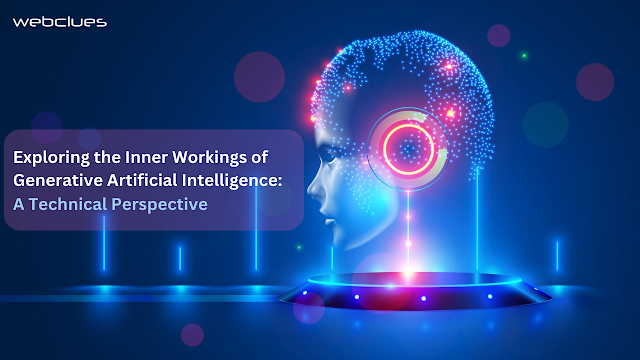Generative Artificial Intelligence has emerged as a transformative force in the realm of technology, reshaping how machines interact with and understand human-generated content. This cutting-edge field of AI focuses on creating systems that can autonomously generate new, realistic data, be it images, text, or even entire pieces of music.
Understanding the inner workings of generative AI requires delving into the technical intricacies that enable these systems to mimic and produce content that closely resembles human creations
At the heart of GenAI lies the concept of neural networks, which serve as the foundational architecture for these intelligent systems. Neural networks are computational models inspired by the structure and functioning of the human brain. In the context of generative AI, a specific type of neural network known as a generative model is employed. One of the most notable examples is the Generative Adversarial Network (GAN).
GANs consist of two primary components: a generator and a discriminator. The generator is tasked with creating data, such as images or text, while the discriminator evaluates the generated content and distinguishes it from real, human-created data. These two components engage in a continual feedback loop, with the generator striving to improve its output to fool the discriminator, and the discriminator adapting to better discern between real and generated content. Through this adversarial process, the generator becomes increasingly adept at creating content that is indistinguishable from human-generated data.
The success of GANs can be attributed to their ability to learn and adapt through training. During the training phase, the neural network is exposed to a vast dataset containing real examples of the desired output, whether it be images of faces, paragraphs of text, or other types of content. As the generator and discriminator iteratively refine their abilities through this exposure, the generative model becomes proficient at producing content that aligns with the patterns and characteristics present in the training data.
The underlying mathematics of GANs involves the optimization of complex functions through backpropagation and gradient descent. The generator aims to minimize the discernibility of its output from real data, while the discriminator seeks to maximize its accuracy in distinguishing between real and generated content. This delicate balance results in a generative model that continuously improves its capacity to generate high-quality, realistic outputs.
Beyond GANs, there are other approaches to generative AI, such as Variational Autoencoders (VAEs). VAEs operate on a different principle, utilizing an encoder-decoder architecture to map data into a latent space and then reconstruct it. This latent space representation allows for the generation of new data points that share similarities with the training data. While VAEs and GANs have distinct mechanisms, both contribute to the diverse landscape of GenAI, each with its strengths and applications.
The ethical implications of GenAI also come to the forefront when exploring its inner workings. The ability to generate highly realistic content raises concerns about the potential misuse of such technology, including the creation of deepfakes—digitally manipulated content that convincingly replaces or superimposes existing content. Researchers and developers are actively working on mitigating these risks through techniques such as adversarial training to make generative models more robust against adversarial attacks.
In conclusion, exploring the inner workings of GenAI from a technical perspective unveils the intricate dance of neural networks, optimization algorithms, and adversarial processes that drive these systems. As generative artificial intelligence continues to advance, it holds immense potential for creative applications in fields like art, design, and entertainment. However, it also demands careful consideration of ethical implications and the development of safeguards to prevent misuse. Understanding the technical intricacies of generative AI is essential for navigating the evolving landscape of artificial intelligence and harnessing its power responsibly. Eager to take advantage of the cutting-edge capabilities of GenAI solutions for your business? Collaborate with WebClues Infotech to access the possibilities of artificial intelligence.


0 Comments